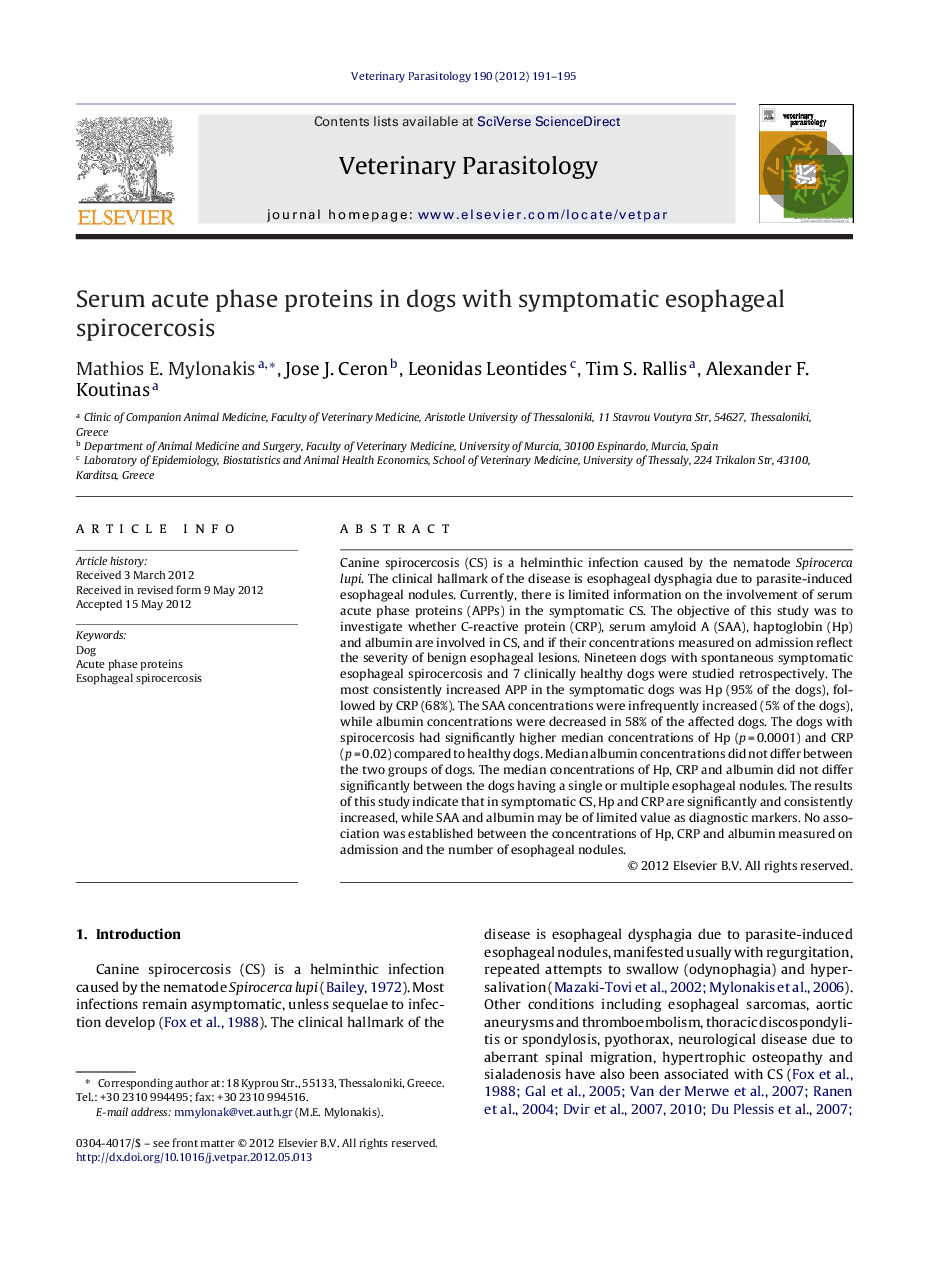| Article ID | Journal | Published Year | Pages | File Type |
|---|---|---|---|---|
| 5804689 | Veterinary Parasitology | 2012 | 5 Pages |
Canine spirocercosis (CS) is a helminthic infection caused by the nematode Spirocerca lupi. The clinical hallmark of the disease is esophageal dysphagia due to parasite-induced esophageal nodules. Currently, there is limited information on the involvement of serum acute phase proteins (APPs) in the symptomatic CS. The objective of this study was to investigate whether C-reactive protein (CRP), serum amyloid A (SAA), haptoglobin (Hp) and albumin are involved in CS, and if their concentrations measured on admission reflect the severity of benign esophageal lesions. Nineteen dogs with spontaneous symptomatic esophageal spirocercosis and 7 clinically healthy dogs were studied retrospectively. The most consistently increased APP in the symptomatic dogs was Hp (95% of the dogs), followed by CRP (68%). The SAA concentrations were infrequently increased (5% of the dogs), while albumin concentrations were decreased in 58% of the affected dogs. The dogs with spirocercosis had significantly higher median concentrations of Hp (p = 0.0001) and CRP (p = 0.02) compared to healthy dogs. Median albumin concentrations did not differ between the two groups of dogs. The median concentrations of Hp, CRP and albumin did not differ significantly between the dogs having a single or multiple esophageal nodules. The results of this study indicate that in symptomatic CS, Hp and CRP are significantly and consistently increased, while SAA and albumin may be of limited value as diagnostic markers. No association was established between the concentrations of Hp, CRP and albumin measured on admission and the number of esophageal nodules.
